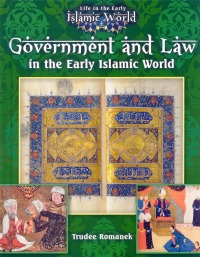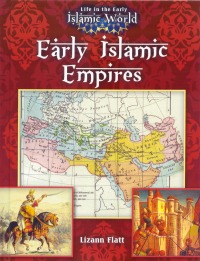| ________________
CM . . .
. Volume XIX Number 27. . . .March 15, 2013
excerpt:
Four titles in the series, Arts and Culture in the Early Islamic World, The Role of Religion in the Early Islamic World, Science, Medicine and Math in the Early Islamic World and Trade and Commerce in the Early Islamic World were reviewed previously in CM. Interest in Islam, Muslim history, culture and ideas has grown considerably in North America and Europe over the last number of years because of increasing immigration from Africa and the Middle East, and especially after 9/11 and the wars and disruption that followed it. It’s useful to have accurate and substantive information for children about the early Islamic world. Children who have no connection with Muslim culture can learn a great deal of history and gain an understanding of a world outside of the European-based society in which we live. Children whose heritage is Muslim can also learn about their own cultural history and see it respectfully represented in library collections in our changing country. The two titles reviewed here provide good insight into how government and law developed in Islamic societies and how exploration on the part of Muslims and Europeans affected each other. The period of the Crusades is of major interest because it created possibilities for trade and other cultural exchanges. These beautifully designed 48-page books will keep readers between the ages of 10-13 turning pages. The background of each page is a gentle antique gold. Reproductions of tapestries, paintings, manuscripts, medals or other decorative art illustrate the two-page chapter topics, with captions to explain. The lead paragraph of each chapter is printed in bold type, followed by historical information that is further divided into subtopics. Significant words are highlighted and defined in a glossary at the end of the book where a section on biographies of historically important individuals is also found, as well timelines showing what was happening in other parts of the world during the same era, suggestions for further research and an index. Most important, though, is the text, which records the complex history of the Muslim world over time. Mindful that details can be overwhelming, the writing style is clear:
Additional information is added in boxes:
This series, while not comprehensive (there is no volume on the role of women, for example) does provide a rounded picture of society as it developed in North Africa and the Middle East. All the titles will be welcome additions to a library collection. They can be used in teaching units or serve as good reading for young history buffs. Highly Recommended. Harriet Zaidman is a teacher-librarian in Winnipeg, MB.
To comment
on this title or this review, send mail to cm@umanitoba.ca.
Copyright © the Manitoba Library Association. Reproduction for personal
use is permitted only if this copyright notice is maintained. Any
other reproduction is prohibited without permission.
NEXT REVIEW |
TABLE OF CONTENTS FOR THIS ISSUE
- March 15, 2013.
AUTHORS |
TITLES |
MEDIA REVIEWS |
PROFILES |
BACK ISSUES |
SEARCH |
CMARCHIVE |
HOME |

